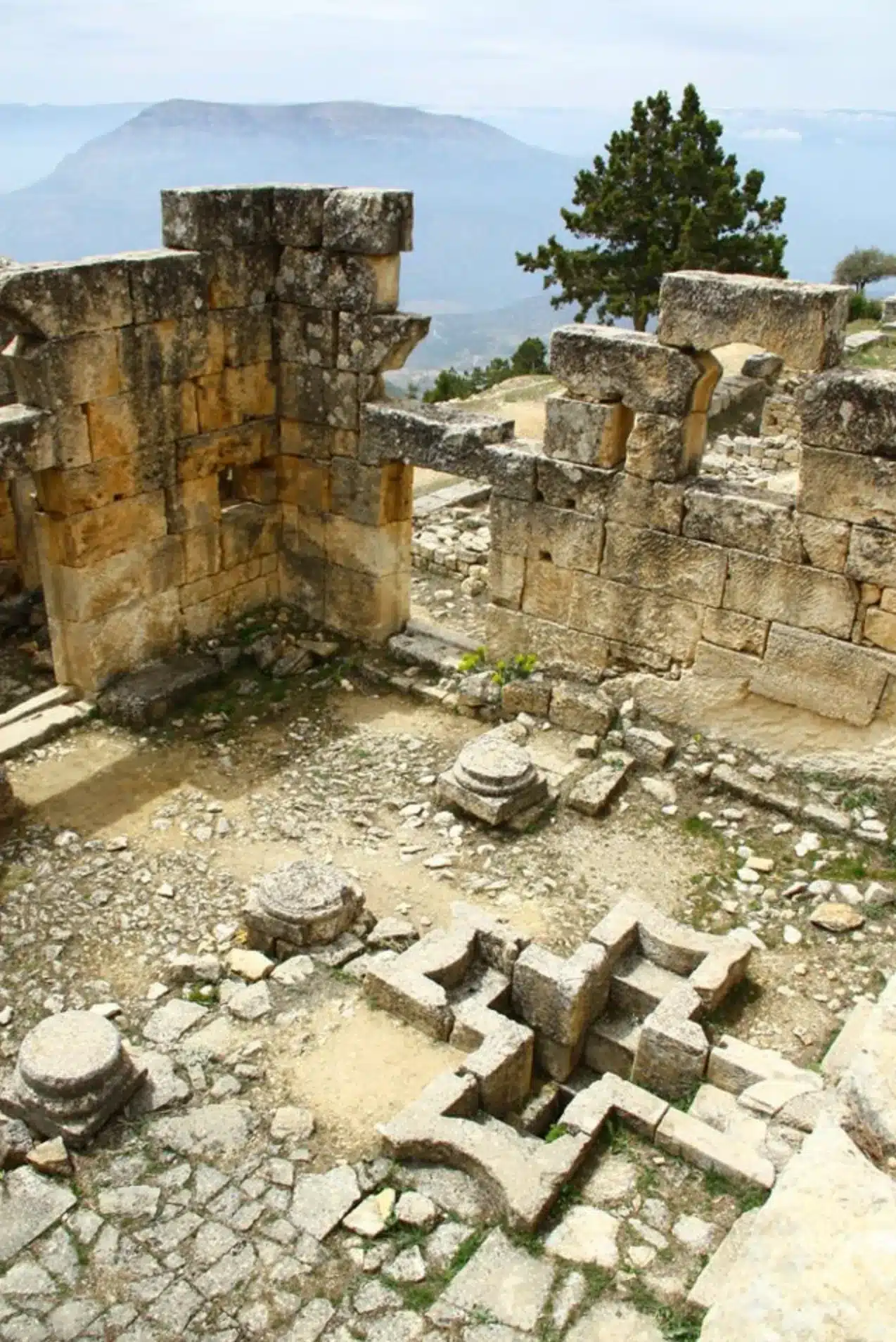Difficulty: Medium. Loose rocks.
Distance from Incirlik: 4 Hours drive.
It is in the vicinity of Geçimli village at an altitude of 1300 m, 20 km north of Mut District in Mersin province. The Alahan Monastery, which Evliya Çelebi describes as “looks like it just came out of the hands of its master”, is perched on a steep hillside overlooking the Göksu Valley.
Mut Alahan Monastery, which has been on the World Heritage Tentative List since 2000, was restored in 2013.
The Alahan Monastery, which was used extensively between the 5th and 6th centuries AD and is thought to be a “Pilgrimage Center” for Christians, its unique topographic location on the slopes of the Taurus Mountains, two richly decorated large churches, baptistery, columned road, rock tombs, water resources, bath and with its accommodation places, it has an important place in Early Christian art and Byzantine Architecture History.
Temples were built in memory of St. Paul, one of the apostles of Jesus Christ, and Barnabas, one of the Christian pioneers who lived in Tarsus, where they stayed during their travels to spread Christianity. Alahan Monastery is one of them.
The Alahan Monastery, which is estimated to have been built in 440-442, consists of the Western Church, the Monastery, the Eastern Church, monk chambers carved into the rocks and the surrounding tombs. Church buildings share common architectural features with the Hagia Sophia Museum. A master stone carving is seen in its decoration. The first church is divided into three naves with a Corinthian cap and two rows of columns. The side pillars of the door leading from the narthex to the main space are decorated with reliefs. The six-winged Gabriel carrying another wreath of St. Paul, St. Pierre figures, Michael’s crushing of symbolic creatures, the roaring lion, eagle, and ox symbols, depictions of biblical writers, bunches of grapes, vine leaves, and fish motifs are richly depicted.
To the south of the large courtyard to the east of the churches, the hall where religious ceremonies were held is in the form of an 11 m long arched and columned gallery. In the middle of the gallery, there is a large niche with embossed ornamentation and work on all sides. In the gallery, there is the baptistery with an apse and the tombs, the most magnificent structure of the Alahan Monastery, opposite it. The northern wall of these tombs is carved into the rock and has no cover. The middle of the main nave is interesting. It is in the form of a square planned tower covered with four arches resting on piers and columns. The tower has been converted into an octagon above. The door frame is ornate. There is a large basilica with three naves and a narthex in the sanctuary, which is dated to the 5th and 6th centuries AD. In the apse of the church, which was built using the apse of the basilica, the sitting stages (sythronos) of the priests can be seen. To the east is the Eastern Church or “Domed Church”, which is the most important structure of the complex. It was built of cut stone and is decorated with reliefs all over. The Alahan Monastery is one of the most unique works in Anatolia with its different technical applications, stonework, and relief decorations.

